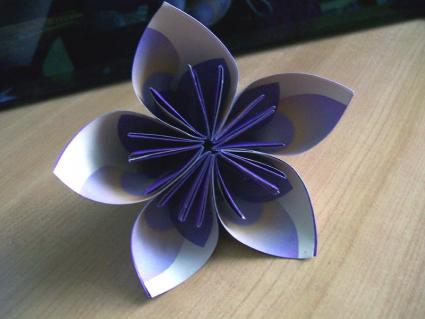

The name origami is generally thought to originate from two smaller Japanese words.

However, if you believe art is creation of something purely for the pleasure of creating it, then origami can be considered an art form. Great minds have debated about what qualifies as art. As origami is a Japanese word, it became primarily seen as a Japanese activity. The term origami emerged in Japan in the late 1800’s. Here it was further developed into a practice known as papiroflexia. In the meantime, the Moors brought a form of mathematically-based paper folding to Spain. However, in the 1600’s it became a popular artform in Japan and it is here that the first known written origami instructions were recorded in 1797.Īt this stage, the practice was called orikata, meaning “folded paper.” While it is assumed by many that origami is a strictly Japanese pastime, it is most likely to have originated in China (3). Origami was also used to teach some basic principles of mathematics.Īs paper became more widely available, origami was also practiced to create decorations and purely for the purposes of artistic enjoyment (2). These paper sculptures were made for ceremonial or religious purposes. It is thought that religious leaders and monks were the first to practice origami. Therefore, it was used primarily by royal households, monks, and religious leaders for recording important texts. Initially, paper was a rare and expensive item. Paper, as we know it today, was invented by the Chinese approximately 2,000 years ago (1). However, in many origami tutorials for children, the addition of a dot for an eye or a line for a mouth can often be found. True origami does not allow any marking of the paper. It’s essentially paper-folding for kids or adults. The sculpture must be made without making any cuts to the paper, nor can any form of sticky tape or glue be used. The petals of my model have additional folds, and features a large octagonal center and a stem leaf.Origami is the art of making folds in a square of paper to create a sculpture. In another blog post here at Origami Spirit, I feature an origami sunflower of my own design based on the pipe-cleaner flower.
Easy origami flower with one piece of paper how to#
She shows how to make the flowers with different kinds of paper currency. In her book Money Gami*, Gay Merrill Gross has featured some lovely versions of this flower under the name of “Mediterranean Daisy”. The caption reads: This design was folded by a barman in Cyprus! Diagrams by David Brill, 2000. Yet another version of this model –made with cigarette foil paper, is found on the British Origami Society website. He also shows another unit, added below the flower, to make two leaves. In this book Guido shows the petal units folded from three squares of paper, and the stem made from a twisted strip of the same paper. The flower from cigarette paper appeared in 1986 in the Italian book Fiori in Origami, by Guido Gazzera and identified by the name Margherita (Daisy). It is listed as a Modular Flower (Neo-Traditional) with diagrams by Mark Kennedy.

The idea of using a pipe cleaner was most-likely implemented by Becky Berman, an art teacher.ĭiagrams for the version shown here appeared in the OrigamiUSA 1991 Annual Collection. Subsequently, the flower was made with rectangular pieces of paper and tied with a pipe-cleaner. In a meeting at Lillian Oppenheimer’s Origami Center in New York City in 1979, Gay taught the flower to several people. The three squares were used for the petals and the strip was twisted around the petals to hold them together and form a stem. That model was made with three squares and a long strip cut from the silver paper that lined cigarette packs. Gay Merrill Gross, a well-known author of origami books, learned a version of this flower in Israel, in 1976. The exact origin of this flower is not known, but according to several sources, it might have Mediterranean roots. Additionally, you’ll learn how to embellish the flower and pick up a few tricks on coloring various papers for striking results. The following video demonstrates how to make this model. It is informally known as the ”Pipe-cleaner Flower” and can be completed in the blink of an eye. This six-petal flower is made with three rectangular units tied together with a piece of wire or pipe cleaner. They can be perfect gifts or used as festive decorations. Origami flowers are usually easy to make and have the added benefit of not wilting –as quickly anyway, as natural flowers.


 0 kommentar(er)
0 kommentar(er)
